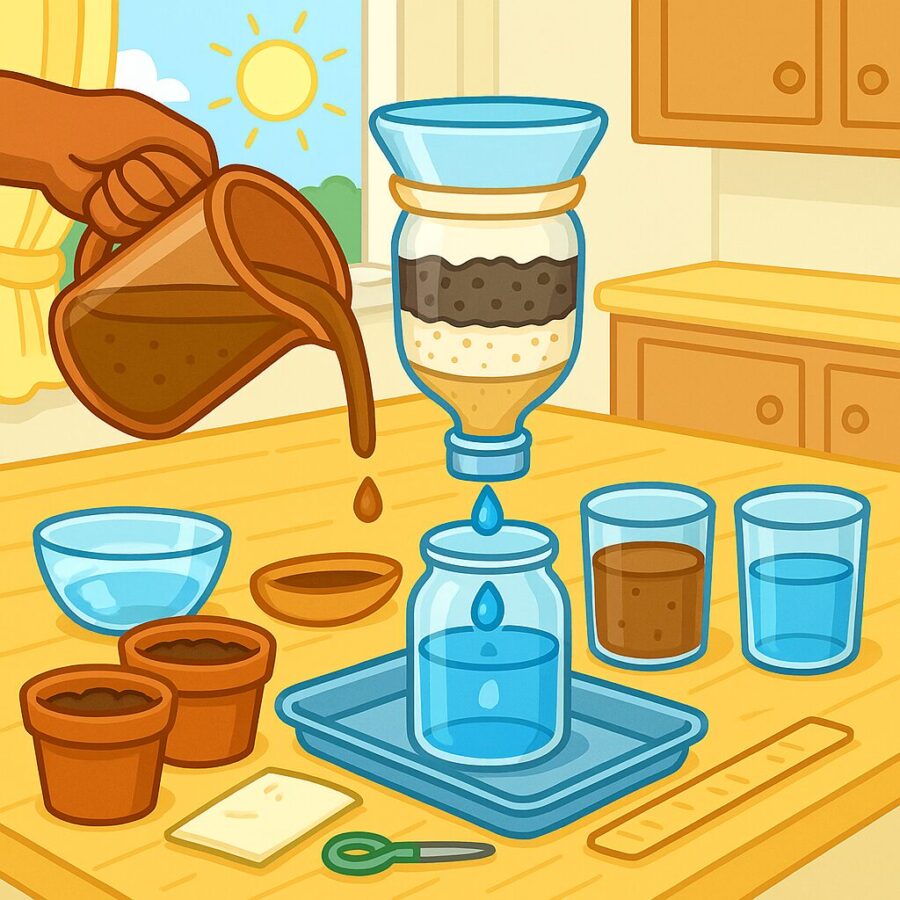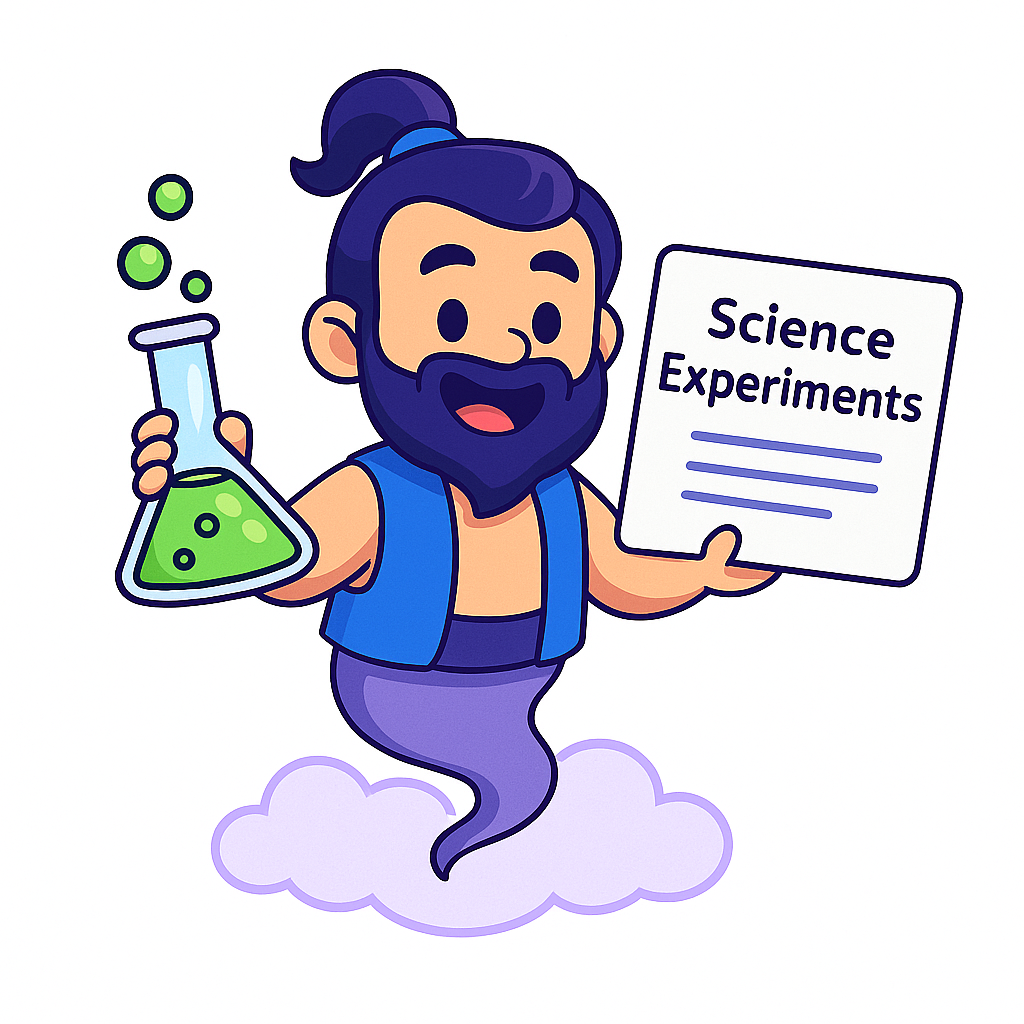 Water Filtration Challenge:
Water Filtration Challenge:
Build a Homemade Water Filter and Discover How Nature Cleans Water
Build a Homemade Water Filter and Discover How Nature Cleans Water
In this hands-on science challenge, students build their own homemade water filtration system using everyday materials. This exciting activity models how natural and engineered filters clean dirty water by removing visible particles, sediments, and odors. While the resulting water is not drinkable, learners will gain a clear understanding of how filtration systems help purify water around the world.
This experiment supports real-world learning in environmental science, earth systems, and engineering design. It’s ideal for grades 3–5 but can be adapted for a wide range of students. By observing how layered materials trap particles of different sizes, students build problem-solving skills while making meaningful connections to sustainability and water conservation.
Overview
- Grade Level: 3rd–5th Grade (Adaptable K–8)
- Topic: Environmental Science, Engineering Design
- Time Required: 30–40 minutes
- Mess Factor: Medium (prepare for spills)
Purpose: To explore how natural materials can help filter out dirt and particles from water through physical processes.
Hypothesis: If I create a filter using layers of different materials, then the dirty water will become clearer because the layers will trap different sizes of particles.
Materials
- 1 empty plastic bottle (16 oz), cut in half
- Coffee filter or paper towel
- Rubber band
- Clean sand (about 1/2 cup)
- Activated charcoal (about 1/4 cup)
- 5–6 cotton balls
- 2 clear cups or jars
- Dirty water (mix soil with tap water)
- Tray or plate (to catch spills)
- Scissors (adult use only)
- Measuring cups

Step-by-Step Instructions
- Have an adult cut the bottom off a plastic bottle. Turn it upside down to create a funnel.
- Insert the coffee filter or paper towel into the neck of the bottle. Secure it with a rubber band if needed.
- Add 2 tablespoons of cotton balls on top of the filter.
- Add 1/4 cup of activated charcoal on top of the cotton balls.
- Add 1/2 cup of clean sand above the charcoal layer.
- Place the funnel over a clean cup or jar.
- Slowly pour about 1 cup of dirty water into the filter system.
- Watch the water drip down through the layers and into the cup below.
- Observe and compare the clarity of the water before and after filtration.
- Record your observations and analyze the filter’s effectiveness.

How It Works
Filtration is one of the oldest and most widely used methods to clean water. In both natural environments and engineered systems, water flows through porous layers of materials that trap larger particles while letting cleaner water through. This mimics the Earth’s own purification processes.
Layer Roles:
- Sand: Removes large debris, visible sediment, and soil particles.
- Charcoal: Absorbs odors and small impurities through a process called adsorption.
- Cotton: Helps prevent fine debris from entering the filter neck and adds another layer of particle capture.
Scientific Principles at Work:
- Physical Filtration: As water moves through the layers, particles are blocked based on size.
- Adsorption: Activated charcoal captures contaminants by trapping them on its surface due to its large internal surface area.
- Gravity: The force that pulls water downward through each material.
While this filtration method makes the water look clearer and removes many physical contaminants, it does not eliminate dangerous bacteria or chemicals. It’s a powerful demonstration of natural water purification—but it should never be considered safe for drinking.
Design Variations
- Try reversing the order of the layers. Does the filter still work?
- Add a layer of gravel or pebbles. Does it help trap more debris?
- Use different filter materials: cotton swabs, cloth, sponge, or even grass.
- Use more charcoal or sand and compare results.
- Measure how long filtration takes with different materials or configurations.
Learning Objectives
- Understand how natural and synthetic filters remove solids from water.
- Practice measurement, prediction, and scientific observation.
- Test how different materials affect water clarity and flow.
- Explore real-world environmental applications like clean water access and sustainability.
Worksheet & Generator
Download our printable worksheet or use the science experiment generator to customize your own version!
Frequently Asked Questions
No. This is a model of physical filtration and does not remove microscopic organisms like bacteria, viruses, or chemical pollutants. It’s an educational demonstration—not a method for creating drinking water.
Sand catches large dirt particles. Cotton helps slow water and trap medium-sized particles. Charcoal adsorbs smaller impurities and odors. All layers work together to improve clarity, but none eliminate pathogens or chemical contaminants.
Absolutely. Try gravel, paper towel layers, sponge pieces, or clean cloth. Have learners predict and test which combinations filter best. This encourages creativity and inquiry-based design.
You can mix clean tap water with dirt, soil, sand, or even used coffee grounds. Avoid adding anything unsafe or smelly—this experiment is meant to mimic muddy or polluted water without becoming hazardous or unpleasant.
Related Experiments
- Plant Growth Light Experiment
- Sticker Microfluidics
- Banana DNA Extraction
- Browse All Science Experiments
Share Your Results
We’d love to see your filter designs and results. Share photos, questions, or observations with us @homeschoolgenie or leave a comment below!
⭐ What Parents & Teachers Are Saying
Recent Feedback
There are no reviews yet. Be the first one to write one.

